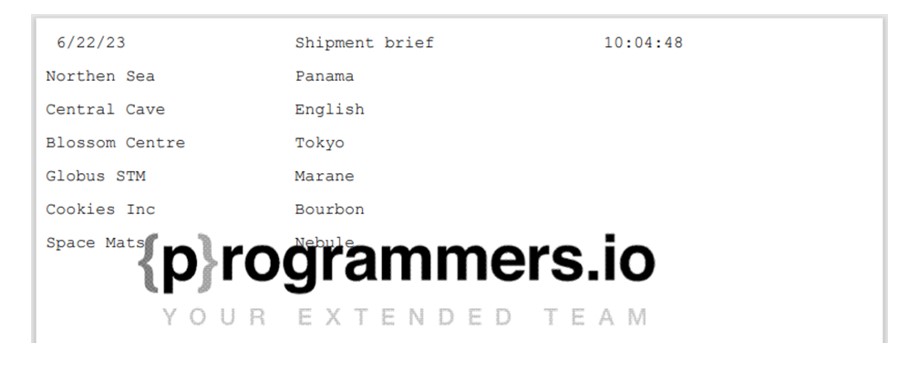In the digital era, where screens often dominate our interactions, the tangible power of print still holds a special place. Your company’s logo and letterhead do not just represent you on paper; they form the physical representation of your brand, conveying professionalism, trustworthiness, and consistency.
The question is, how can you ensure that every printed piece perfectly represents your brand?
The answer lies in IBM i Programming, a platform that merges design and technology for an exquisite logo and letterhead printing process. In this guide, we will walk you through the step-by-step process of setting up logo and letterhead printing from IBM i.
Step 1: Overlay Templates and AFPDS Formatting
- To create overlay files, you will need an overlay printer.
- Create a simple document with letterhead information and print it with an overlay printer .OLY file.
- This .OLY file will enable you to print your letterhead.
- The IBM website provides details about installing the overlay printer driver.
- IBM i sends overlay information to a printer using AFPDS (Advanced Function Print Data Stream). Here a document begins by composing total pages.
Step 2: Upload Your Assets to IBM i
a. Using the Overlay Navigator:
- Click on Overlays under the Resources tab in Navigator to find the AFP manager.
- Next, click the Import overlay button in the lower pane.
- In the Browse section, select the .OLY file.
- Make sure the resource name is meaningful, e.g., PackSlipOl.
- In printer files, this resource is called Overlay.
- As a last step, fill in the library, description, and authority and choose AFPDS as the Data Type.

b. Using File Transfer Protocol (FTP):
- An alternative method of transferring .OLY files to IBM i are through FTP.
- The binary method is to create an IBM i flat file and FTP a .OLY file to it.
- Using IBM i, create an overlay.
- Input overlay name, library, and IBM i file where .OLY file was sent via FTP and the data type was AFPDS.

Step 3: Data Merging and Printing:
a. Data Integration:
- When printing documents with personalized data (e.g., invoices with customer details), make sure that your data is appropriately merged into the template.
b. Print Testing:
- Evaluate your logos, letterheads, and data before mass printing. The purpose of this step is to identify any potential problems that may arise during the full-scale printing process.
- Overlays for the front and back sides are available in the spool file parameters.
- Provide an overlay for the printer file during compilation or override it if it is required.
- IBM i sends overlay information via AFPDS to the printer.


Step 4: Continuous Monitoring and Updates
a. Adapt to Changes:
- As the branding evolves, make sure to update all logos and letterhead templates accordingly.
b. Technology Advances:
- Stay informed about new features and updates in the IBM i environment that can further enhance your branding and printing capabilities.
The sample below was generated using an Overlay and converted to PDF format.
Programmers.io sample logo is printed as an overlay.

**NOTE:
- Make sure all other printer parameters are configured correctly to prevent printing problems.
- To achieve the intended results, a printer file’s design must be coordinated with program logic.
- For printing jobs, refer to the override hierarchy to ensure that the correct spools are located when printing or creating an electronic document (for instance, a PDF).
Conclusion
In the digital age, branding remains a critical aspect of business success. Printing logos and letterheads from IBM i offers a comprehensive solution that combines design, personalization, efficiency, and consistency. By leveraging the platform’s integrated tools and capabilities, you can ensure that your brand message is accurately represented in every document you print. From enhancing customer communications to strengthening your company’s professional image, IBM i (AS400) empowers you to take control of your branding and printing processes seamlessly and efficiently.




